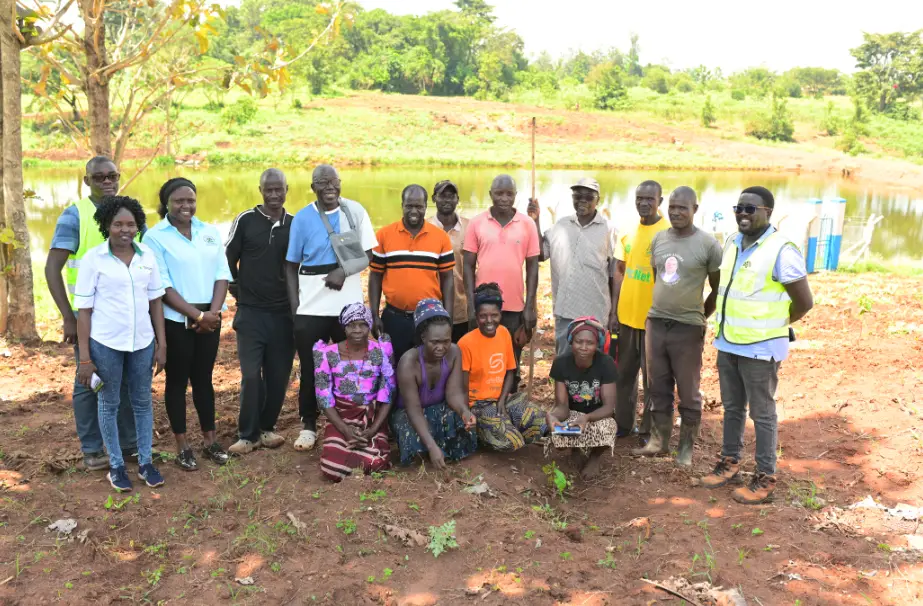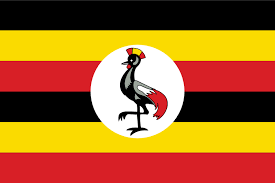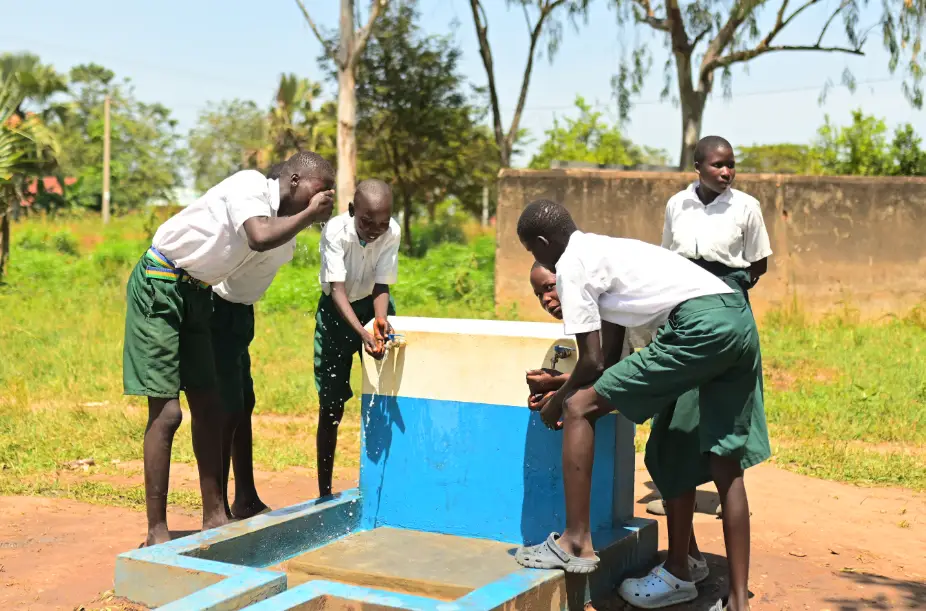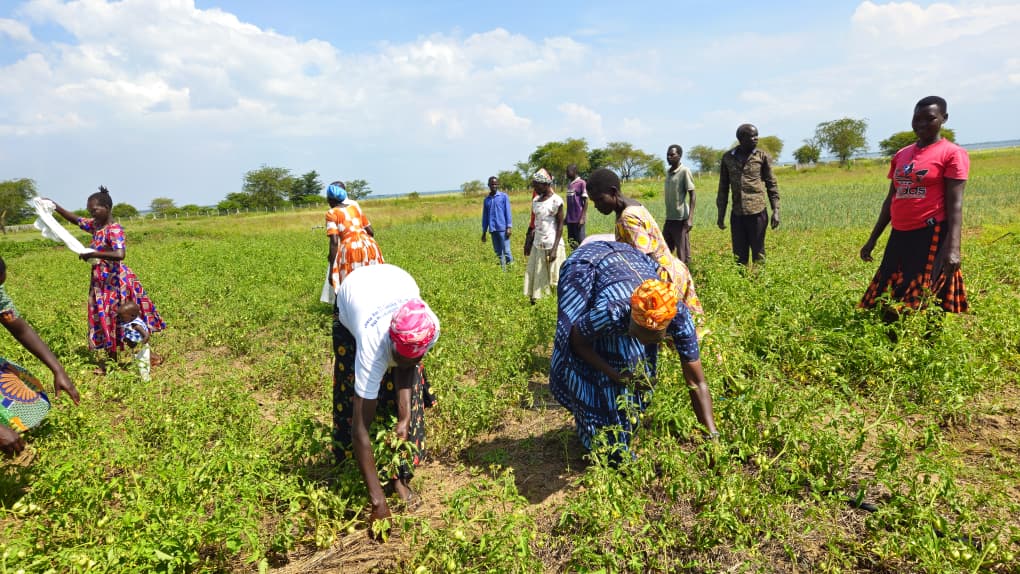
The Hills That Learned to Grow: How Solar Irrigation Is Rewriting Life in Lulikoyo and Kagwara
On the hilly slopes of Lulikoyo, where the earth once cracked under months of dry wind, the hum of solar-powered pumps now rises with the dawn. Below the ridges, silver sprays move rhythmically over green rows of tomatoes and onions, an unfamiliar sight in a place where farming had long been ruled by chance.
Today, the Lulikoyo/Kagwara A solar powered Irrigation Scheme is more than a technical installation; it is a quiet revolution, shaping livelihoods one droplet at a time.
Before the Water: A Life of Waiting, Guessing and Praying
For decades, farmers in these two parishes, West Budama South (Lulikoyo) and Tororo South (Kagwara), farmed only when the rains came. The hills dried fast. Seeds wilted. Most grew yams in swamps far from home, where snakes, theft and unpredictable floods were part of daily routine.
The community heard rumours of a government project, but suspicion lingered.
“People didn’t want to be neighbours of government,” says Emmanuel Oketcho, now the treasurer of the farmers’ association. “They didn’t know that this was the opportunity we had been praying for.”
But they wrote a proposal anyway. They hoped, waited, and now they can plant all year.
Then the Solar Panels Arrived
Across the hills, 36 solar panels now gleam like a new promise, quiet, steady, unbothered by clouds or drought. Nexus Green Ltd, contracted by the ministry of Water and Environment to build the solar-powered irrigation system, diverted water from Osia stream, damming it to create two reservoirs with a combined capacity of 40,000L.
From the reservoirs, water rushes through underground pipes, rising through sprinklers spaced every three metres throwing life into the soil all year long.
“We completed and handed over the project to the Ministry in June,” explains Eng. Yusuf Mutebi, the Nexus Green project engineer. “It’s a €160,000 investment designed for continuous, reliable irrigation on hilly terrain, something this region has never had.”
For the first time, hills that once repelled water now grow food like valley plains.
Silver Obbo Mawele: The Elder Who Waited Half a Lifetime
At 81, Silver Obbo Mawele walks between tomato rows with the ease of a man half his age.
“I left government in 1976,” he says. “I went into fish farming in Bunyoro, then came back home. I’ve farmed everything, yams, maize, cassava, zero grazing but I have never seen anything like this.”
Both his wives passed away years apart, leaving him with 13 children to raise. Farming was his lifeline.
When the idea of the irrigation scheme was first mentioned, he was one of the loudest voices pushing for it.
“I lobbied until my legs hurt,” he laughs softly. “I told them, ‘If we get water, you will see these hills feed our families again.”
Today, he rents two acres in the scheme. He was, in fact, the first farmer to grow tomatoes under the new irrigation system.
A Community Learning to Farm With Certainty
The Lulikoyo Farmers Association is barely six months old, yet it already unites 24 farmers. Each holds a minimum of ¼ acre, rented at UGX 100,000 a year, plus UGX 50,000 for operation and minor repairs, payable only after harvest, because most members are still learning.
They bought their own seeds this season. The Ministry’s irrigation support officer, Bruno Byembabazi, guided them on varieties that are pest-resistant and high-yield.
“These farmers are going to be in the market soon,” Bruno says confidently. “Their tomatoes and onions are promising. This is just the beginning.”
The Couple Who Stopped Digging in the Swamps
For Samuel Oketcho and Hellen Abboth, a husband-and-wife farming team, the scheme is a release from years of hardship.
“We grew yams in swamps before,” Abboth recalled. “You could spend half the day there. Sometimes we came home late because we were digging far away. Now our garden is near, clean, and reliable.”
Their five children now attend school consistently, no longer held back by daily labour or late returns from gardens.
The couple now grows tomatoes three times a year, but the biggest challenge is pests.
“We have spent UGX 210,000 on pesticides already,” Oketcho said. “We are on our fourth spray. If the government helps us with pesticides, we can expand more.”
Dreams Bigger Than Harvests
The scheme brought more than water. It brought ambition. They are in early discussions to form their own savings and credit group to buy inputs in bulk and stabilize their finances.
The group registered for Parish Development Model but the funds have not yet reached the parish. They believe that will uplift real farmers.
Now farmers wake up knowing their gardens will drink, their crops will grow, and their children will eat and go to school.
The project is being supervised by the Ministry through the Water for Production Regional Centre-East based in Mbale city.

 Official Website of the Ministry of Water and Environment
Official Website of the Ministry of Water and Environment





